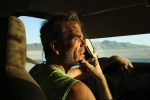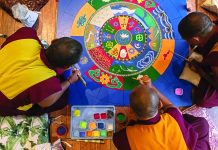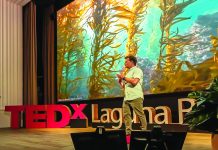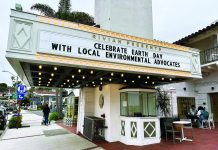Underground Rainwater, Not Utility Poles

Around this time last year, we were awash in wildflowers. Remember those carpets of yellow mustard and sunflowers, those blankets of purple lupine, bluebells, thistle, blue dicks, and pink prickly pears; the orange dodders, poppies, deerweed, and monkeyflowers? A magnificent burst of life, a metaphor to remind us that, no matter the depths of depravity in our national psyche, hope springs eternal.
Well, not so much this year. For even with the recent, long-awaited rains and some late greening of our parched canyons, we remain woefully dry. Just as we were for the five years preceding the great rains of 2017.
That should worry us far more than fires, mud slides and earthquakes. Those are one-time events. But water? A daily, indispensable need. Many predict future wars will be fought over it. And we would be on the losing end of any battle with regions who supply us. An op-ed in the March 9 edition of the Los Angeles Times revealed that two years ago, we were using 24% less water than in 2013. But this year we are hardly conserving at all – just 1%. What’s more, our vital snowpack, which supplies two-thirds of our water needs, is 43% below normal. It’s not just lack of rain. Global warming is converting snow to rain, and that means we lose vital frozen snowpack that provides water during our crucial summer months.
If this isn’t dire enough, we are even more vulnerable because we import nearly all of our water. What happens if an earthquake ruptures one of our pipelines? Or the source where it originates suffers an irreversible drought? We need to transform our water infrastructure with a local supply of recycled water, captured storm water, and groundwater. And stricter conservation practices. At best, over time, we could be 100% self-reliant; at worst we would be able to withstand a prolonged drought or supply interruption.
Which brings me to the hundreds of millions of dollars we will be asked whether to spend in November to underground the power lines on Laguna Canyon Road. Yes, it’s primarily to mitigate the risk of a ruptured power line, which can cause or exacerbate a fire, as well as blocking one of our escape routes. That’s critical. But there’s a vastly cheaper alternative: fortifying the poles with impact-proof, concrete casings. We could then use that remaining money for rain and groundwater capture, as well as recycling. Measures to create real water security for generations to come.
Perhaps some of the other money saved could be spent on some real parking infrastructure to keep cars from cycling through downtown, like periphery lots at our key entry points. City Council made a good decision last week to follow the recommendations of a downtown traffic study to lengthen the southbound Coast Highway left turn pockets at Broadway and Legion, while simultaneously converting lower Park Avenue into a permanent plaza. This will decrease the left turn backups at Forest, while making the crosswalk at Park far safer, not to mention the psychic benefits of a downtown community gathering place.
As meaningful as those measures are, does anyone truly believe they will take a substantial bite out of the tremendous volume of traffic circulating through our town? We still need big, bold ideas to stem the ever-increasing flow of sheet metal into town. Periphery parking lots with congruent public transit is a start. And if locals want to move more fluidly through downtown, they just need an electric bike or scooter, and more ride share options. No need for parking then.
Several years ago the city created a contiguous bike route from Crescent Bay to Nye’s Place, without a single stretch on Coast Highway. We now see far more riders using the route and avoiding the death trap of Coast Highway. But the route alone is not enough to stimulate a transformation to a biking town. We need infrastructure such as bike corrals and artistic bike racks, hotels that offer bikes to guests, and a bike share system. Elements to signify we are a bike-friendly town.
So many other cities up and down our coast have installed them. In a town just seven miles long, with a year-round heavenly climate, we could get far more people out of cars and onto bikes – both electric and manual. It’s a relatively inexpensive fix that has innumerable benefits: fewer cars equal less noise, pollution, traffic, and a healthier population. And most of the bike share companies fund their operations. All we would need to do is carve out the locations for the kiosks. Our city parks would be a good place to start.
Billy Fried hosts “Laguna Talks” Thursday at 8 p.m. on KX 93.5. He can be reached at [email protected].




